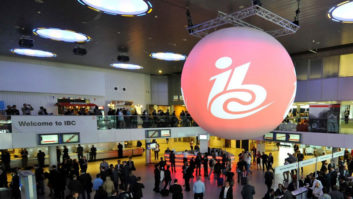The growth in video content consumption continues to accelerate and is an industry trend that’s proving truly fascinating to watch. Viewable on every device, anywhere, it’s clear that we are experiencing an industry-defining shift which promises only to continue.
The rapidly expanding video industry is giving rise to complex considerations. Industry players must serve a whole range of new business models such as free (ad-based) models, subscription models or transactional models. This now all needs to be integrated with billing systems, have high levels of social interactivity, and suitable content protection. If you are a content owner, aggregator, or distributor finding the right services to support your business is becoming increasingly difficult; legacy video ecosystems simply weren’t built to cope with these complications.
What’s important is making sure that valuable and memorable content doesn’t become trapped in an ecosystem where the business models don’t align with evolving consumer demands. Content must be freed if its value is to be preserved.
It’s clear that a ‘one-size-fits-all’ approach is increasingly ineffective. Content owners, aggregators and distributors should look for the freedom to select only the functionality they require rather than investing in an entire out-of-the-box solution. This is about flexible choice based on the requirements of an organisation’s legacy infrastructures and its future needs.
At Piksel, we’ve closely examined the current landscape and created an innovative architecture that side-steps complexity, pursuing simplicity, flexibility, cost-efficiency, and speed. By taking a modular cloud-based approach and using a SOA (service-oriented architecture) framework, it opens up the possibility to deliver flexible pick-and-mix solutions without the hefty price tag. All the while making it to market at unprecedented speed.
It is also clear that user experience and personalisation are crucial components in a successful video offering. Today, video is embedded in an evolving framework of social connectivity, advertising, and recommendations, which in turn are tied to ever changing user interfaces seeking to establish deeper levels of connected intimacy.
The second screen plays an important role in bringing content closer than ever to the viewer. Content providers, broadcasters, and advertisers should be looking for a system that can be customised to their exact requirements and used across their entire content library; using interactivity features for live events or a recommendations module for extending the viewing experience.
Viewers crave a consistent look-and-feel to the services they experience, regardless of device. Technologies that can provide a commonality across different user interfaces are increasingly important for successful multi-screen infrastructures.
The growing adoption of the cloud will enable the TV and media industry to bring to market new online channels quickly and cost-effectively without having to invest in specialised technology resources or hardware. In an age where viewers are demanding content at the click of a button regardless of location or device, technologies must be able to eliminate the complexities of acquiring, aggregating, preparing, managing, delivering, and monetising content to all devices. This will allow the industry to focus on what it does best: delivering great content and satisfying viewers.







